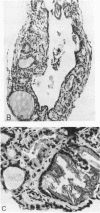Abstract
The pathogenesis of hemolysis-induced gallstones was studied in mice with a hereditary hemolytic disease called normoblastic anemia (genotype nb/nb) and in their normal controls (genotype +/+). Infrared spectroscopy demonstrated that spontaneously formed gallstones from nb/nb mice were nearly identical to stones from patients with chronic hemolysis as the result of sickle cell disease, and both mouse and human stones strikingly resembled synthetic calcium bilirubinate. 57% of 115 nb/nb mice, but none of 109 control mice, developed calcium bilirubinate pigment gallstones (P < 0.001). The incidence of luminal gallstones in nb/nb mice was both sex and age dependent. Female nb/nb mice formed stones twice as frequently as male nb/nb mice (P < 0.001). Before 6 mo of age neither sex developed stones, but thereafter the incidence of stones increased with age. Neither hematocrit, reticulocyte count, nor total plasma bilirubin values, were useful in distinguishing between nb/nb mice with or without gallstones. In gallbladder bile, nb/nb mice with gallstones had higher concentrations of hydrogen ion, total bilirubin, calcium, and bile acids than nb/nb mice without stones. Although total unconjugated bilirubin was similar in both nb/nb groups, the ionized fraction of unconjugated bilirubin was higher in bile from nb/nb mice without stones than those with stones. In nb/nb mice, neutral mucin plugs and pigment concentrations were observed histologically in the glandular crypts of the gallbladder in 33% of nb/nb mice without stones and in 80% of nb/nb mice with luminal stones. This suggested that luminal pigment stone disease in mice with hemolysis may be preceded by microscopic precipitation of calcium bilirubinate in the glandular crypts of the gallbladder. These precipitates may then migrate into the lumen and grow by accretion.
Full text
PDF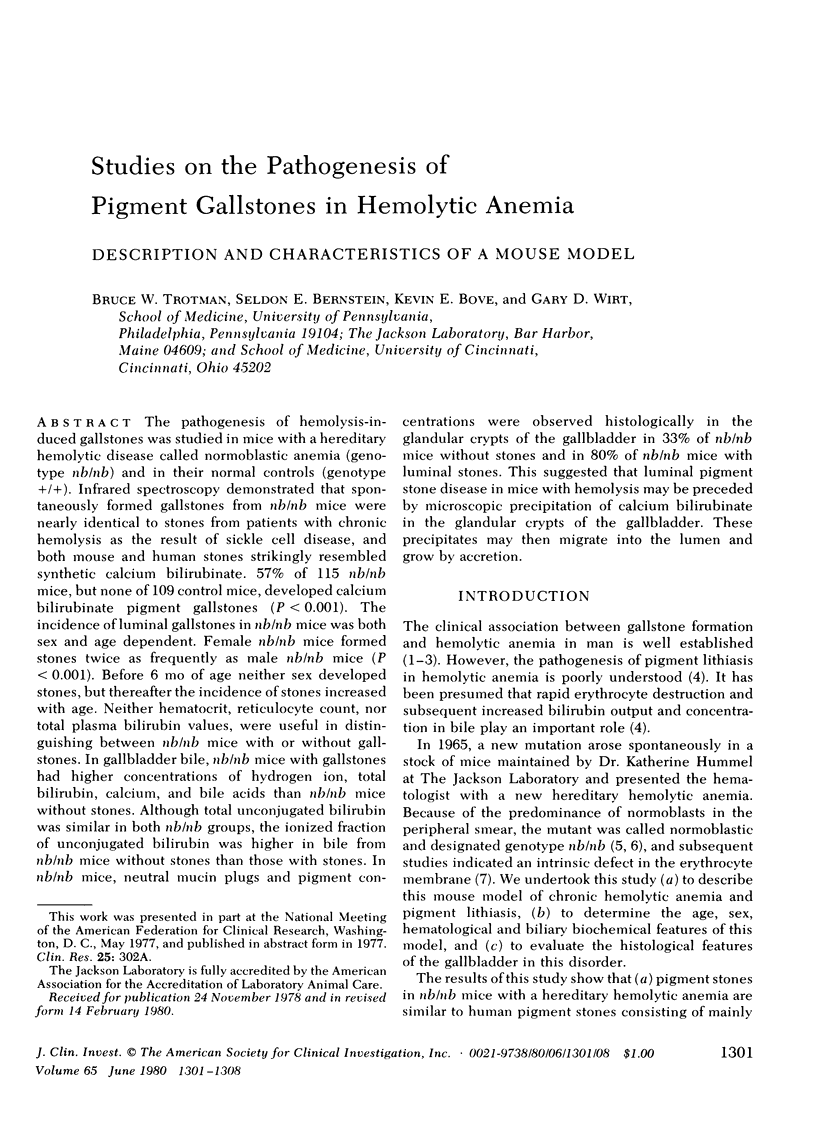

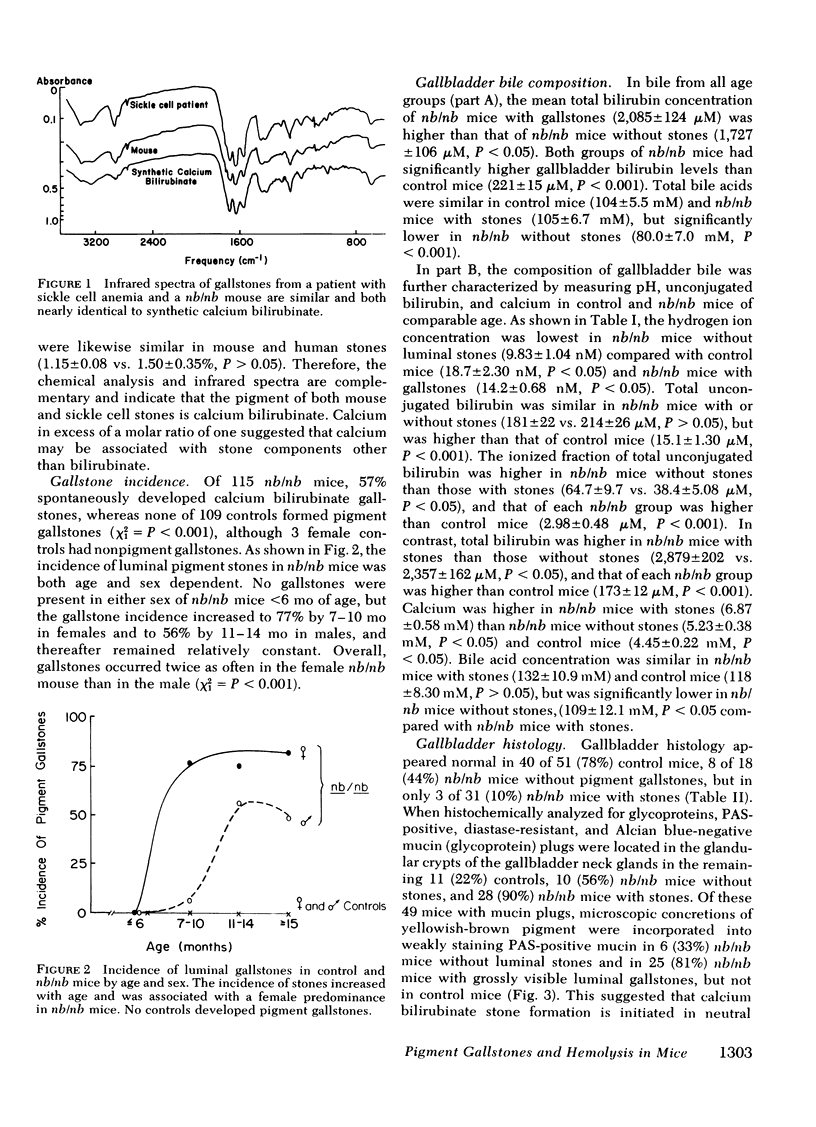
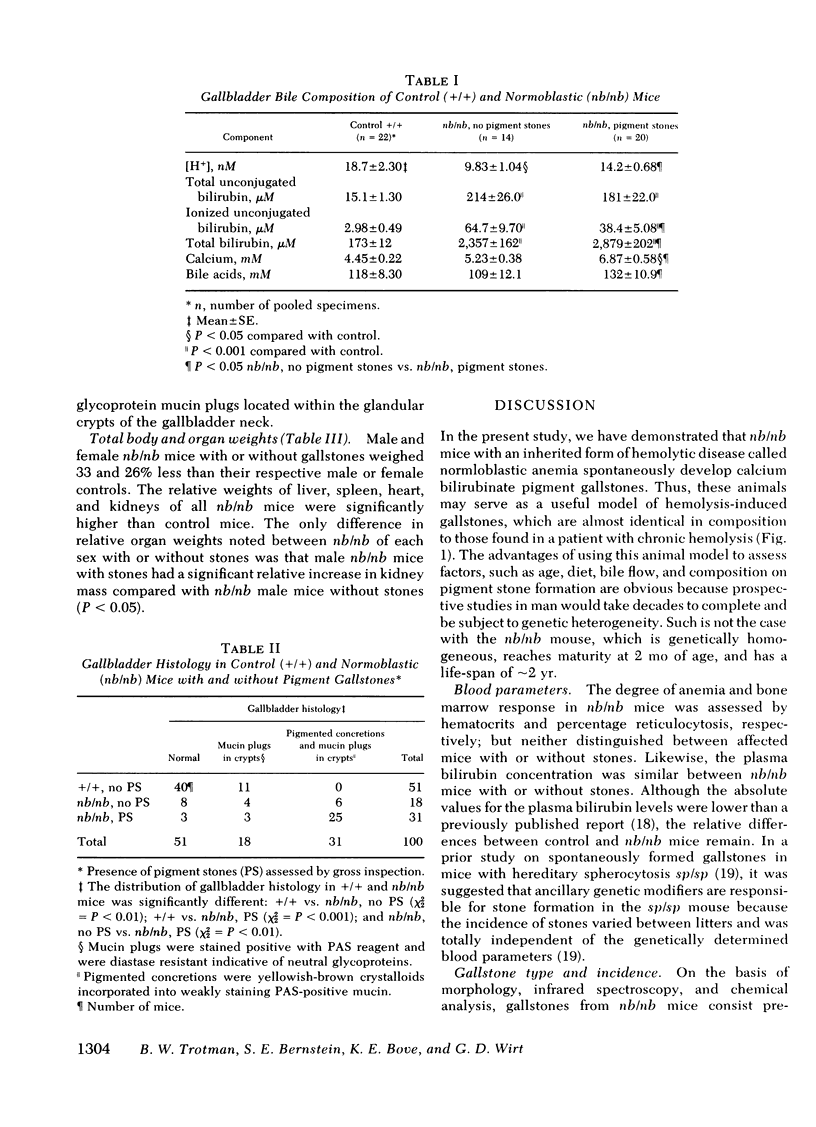
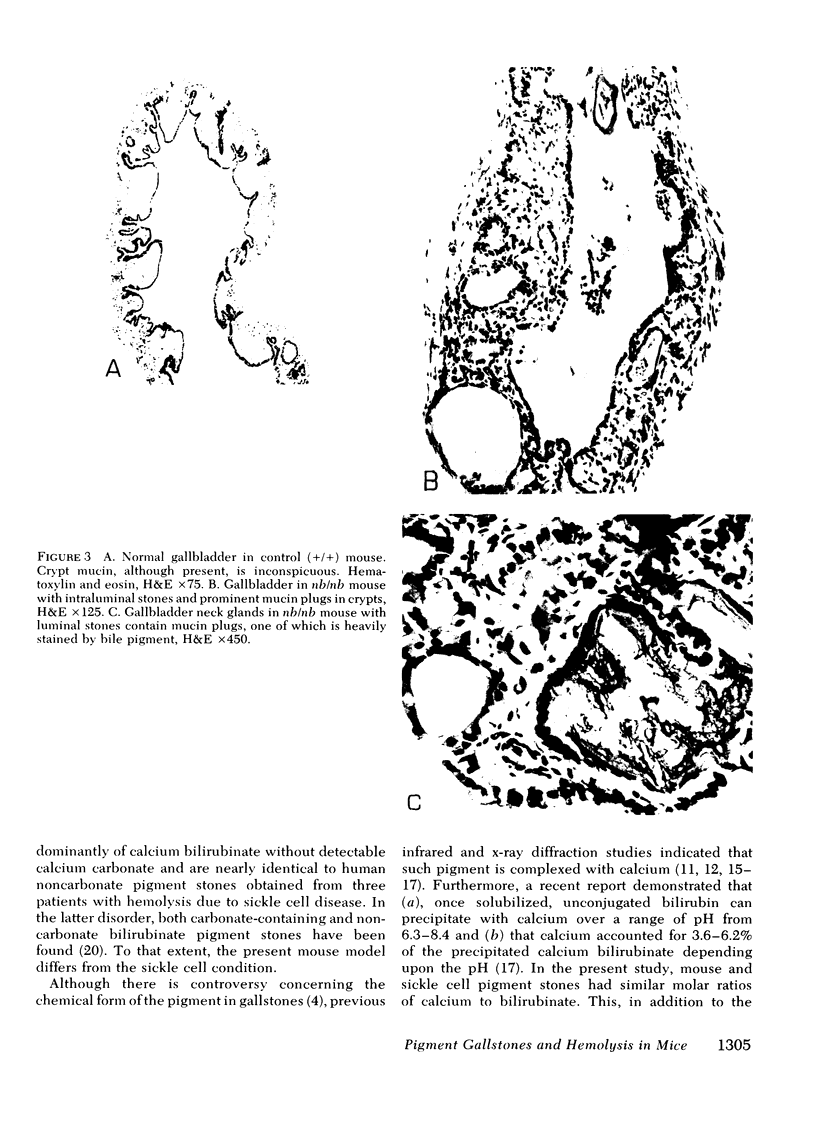
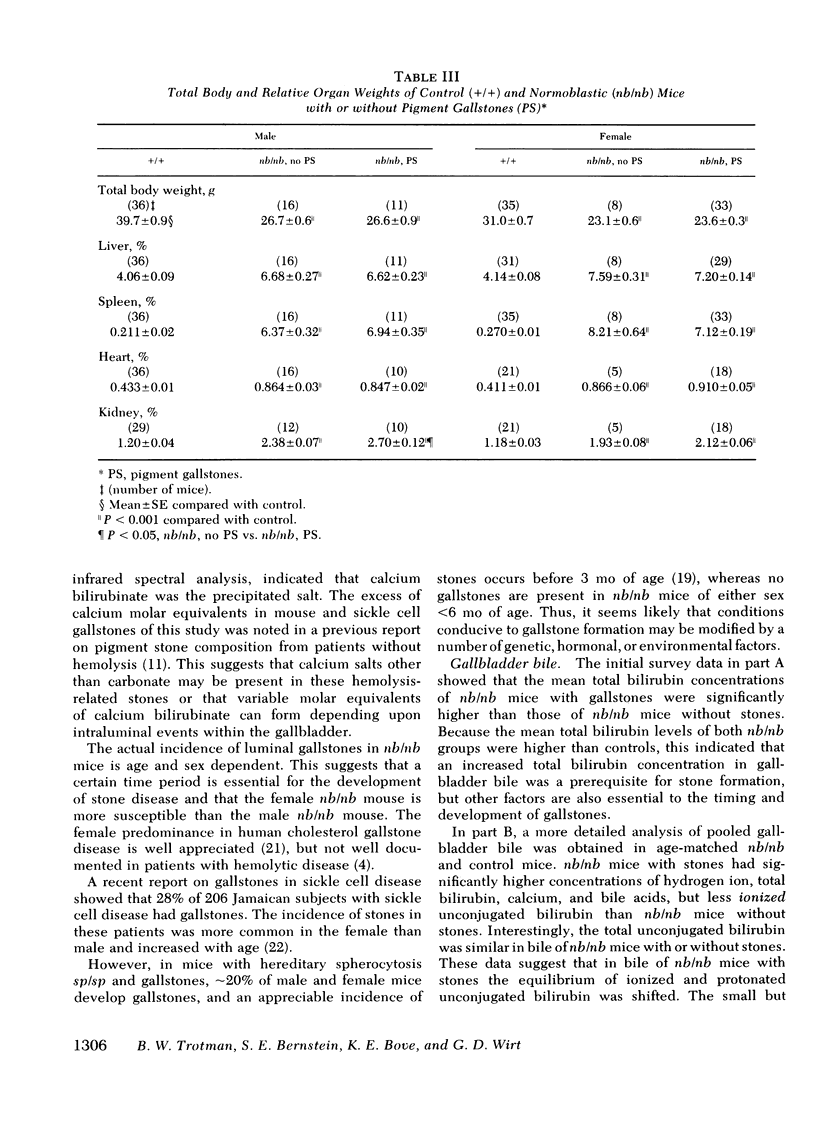
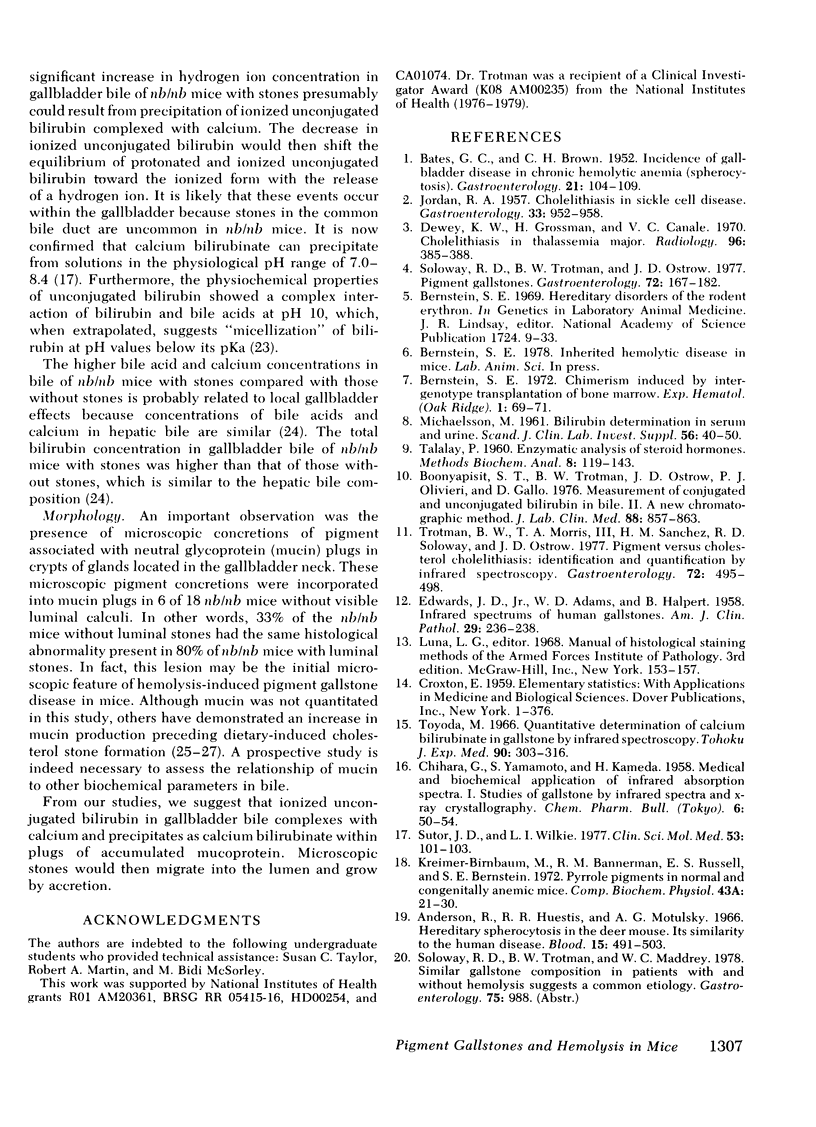
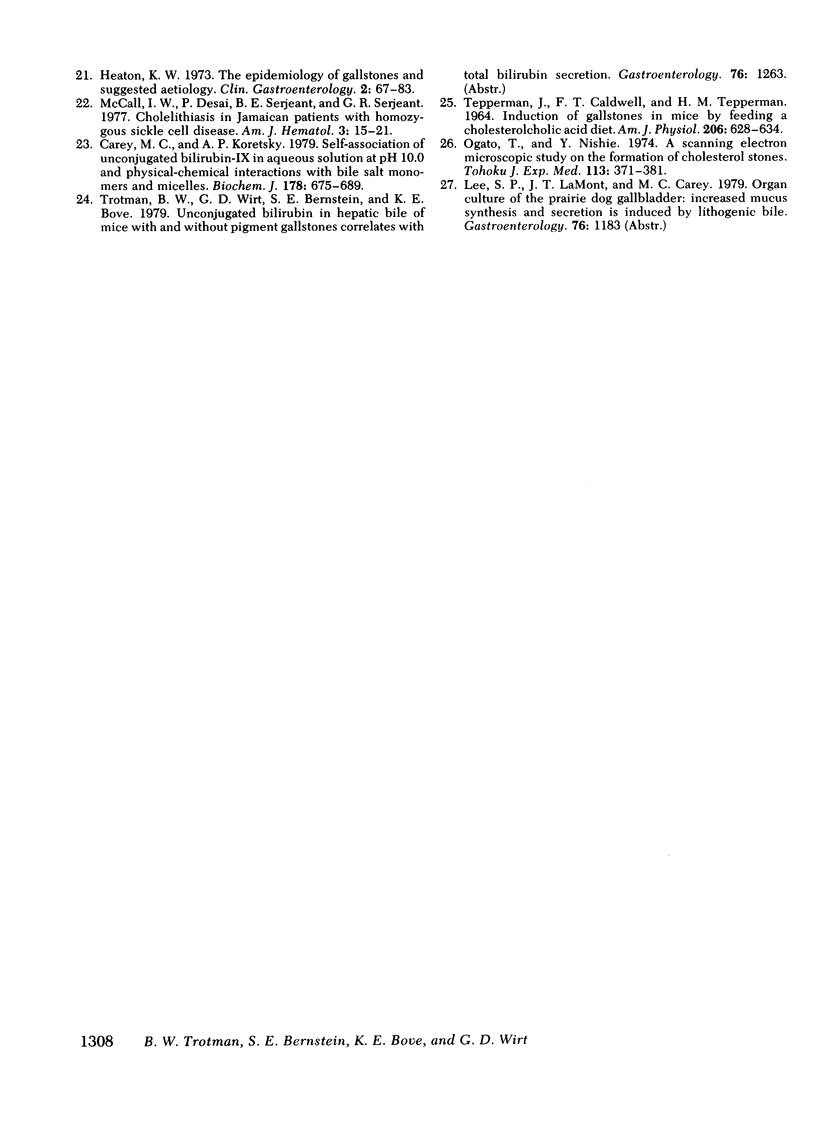
Images in this article
Selected References
These references are in PubMed. This may not be the complete list of references from this article.
- ANDERSON R., HUESTIS R. R., MOTULSKY A. G. Hereditary spherocytosis in the deer mouse. Its similarity to the human disease. Blood. 1960 Apr;15:491–504. [PubMed] [Google Scholar]
- BATES G. C., BROWN C. H. Incidence of gallbladder disease in chronic hemolytic anemia (spherocytosis). Gastroenterology. 1952 May;21(1):104–109. [PubMed] [Google Scholar]
- Boonyapisit S. T., Trotman B. W., Ostrow J. D., Olivieri P. J., Gallo D. Measurement of conjugated and unconjugated bilirubin in bile. II. A new thin-layer chromatographic method. J Lab Clin Med. 1976 Nov;88(5):857–863. [PubMed] [Google Scholar]
- CHIHARA G., YAMAMOTO S., KAMEDA H. Medical and biochemical application of infrared absorption spectra. I. Studies on gall stone by infrared spectra and x-ray crystallography. Chem Pharm Bull (Tokyo) 1958 Feb;6(1):50–54. doi: 10.1248/cpb.6.50. [DOI] [PubMed] [Google Scholar]
- Carey M. C., Koretsky A. P. Self-association of unconjugated bilirubin-IX alpha in aqueous solution at pH 10.0 and physical-chemical interactions with bile salt monomers and micelles. Biochem J. 1979 Jun 1;179(3):675–689. doi: 10.1042/bj1790675. [DOI] [PMC free article] [PubMed] [Google Scholar]
- Dewey K. W., Grossman H., Canale V. C. Cholelithiasis in thalassemia major. Radiology. 1970 Aug;96(2):385–388. doi: 10.1148/96.2.385. [DOI] [PubMed] [Google Scholar]
- EDWARDS J. D., Jr, ADAMS W. D., HALPERT B. Infrared spectrums of human gallstones. Am J Clin Pathol. 1958 Mar;29(3):236–238. doi: 10.1093/ajcp/29.3.236. [DOI] [PubMed] [Google Scholar]
- Heaton K. W. The epidemiology of gallstones and suggested aetiology. Clin Gastroenterol. 1973 Jan;2(1):67–83. [PubMed] [Google Scholar]
- JORDAN R. A. Cholelithiasis in sickle cell disease. Gastroenterology. 1957 Dec;33(6):952–958. [PubMed] [Google Scholar]
- Kreimer-Birnbaum M., Bannerman R. M., Russell E. S., Bernstein S. E. Pyrrole pigments in normal and congenitally anaemic mice (+:+, W-W v , ha-ha, nb-nb, mk-mk, f-f and sla-Y). Comp Biochem Physiol A Comp Physiol. 1972 Sep 1;43(1):21–30. doi: 10.1016/0300-9629(72)90464-1. [DOI] [PubMed] [Google Scholar]
- McCall I. W., Desai P., Serjeant B. E., Serjeant G. R. Cholelithiasis in Jamaican patients with homozygous sickle cell disease. Am J Hematol. 1977;3:15–21. doi: 10.1002/ajh.2830030102. [DOI] [PubMed] [Google Scholar]
- Ogata T., Nishie Y. A scanning electron microscopic study on the formation of cholesterol stones. Tohoku J Exp Med. 1974 Aug;113(4):371–381. doi: 10.1620/tjem.113.371. [DOI] [PubMed] [Google Scholar]
- Soloway R. D., Trotman B. W., Ostrow J. D. Pigment gallstones. Gastroenterology. 1977 Jan;72(1):167–182. [PubMed] [Google Scholar]
- Sutor D. J., Wilkie L. I. The crystalline salts of calcium bilirubinate in human gallstones. Clin Sci Mol Med. 1977 Jul;53(1):101–103. doi: 10.1042/cs0530101. [DOI] [PubMed] [Google Scholar]
- TALALAY P. Enzymic analysis of steroid hormones. Methods Biochem Anal. 1960;8:119–143. doi: 10.1002/9780470110249.ch3. [DOI] [PubMed] [Google Scholar]
- TEPPERMAN J., CALDWELL F. T., TEPPERMAN H. M. INDUCTION OF GALLSTONES IN MICE BY FEEDING A CHOLESTEROL-CHOLIC ACID CONTAINING DIET. Am J Physiol. 1964 Mar;206:628–634. doi: 10.1152/ajplegacy.1964.206.3.628. [DOI] [PubMed] [Google Scholar]
- Toyoda M. Quantitative determination of calcium bilirubinate in gallstone by infrared spectroscopy. Tohoku J Exp Med. 1966 Dec;90(4):303–316. doi: 10.1620/tjem.90.303. [DOI] [PubMed] [Google Scholar]
- Trotman B. W., Morris T. A., 3rd, Sanchez H. M., Soloway R. D., Ostrow J. D. Pigment versus cholesterol cholelithiasis: identification and quantification by infrared spectroscopy. Gastroenterology. 1977 Mar;72(3):495–498. [PubMed] [Google Scholar]



